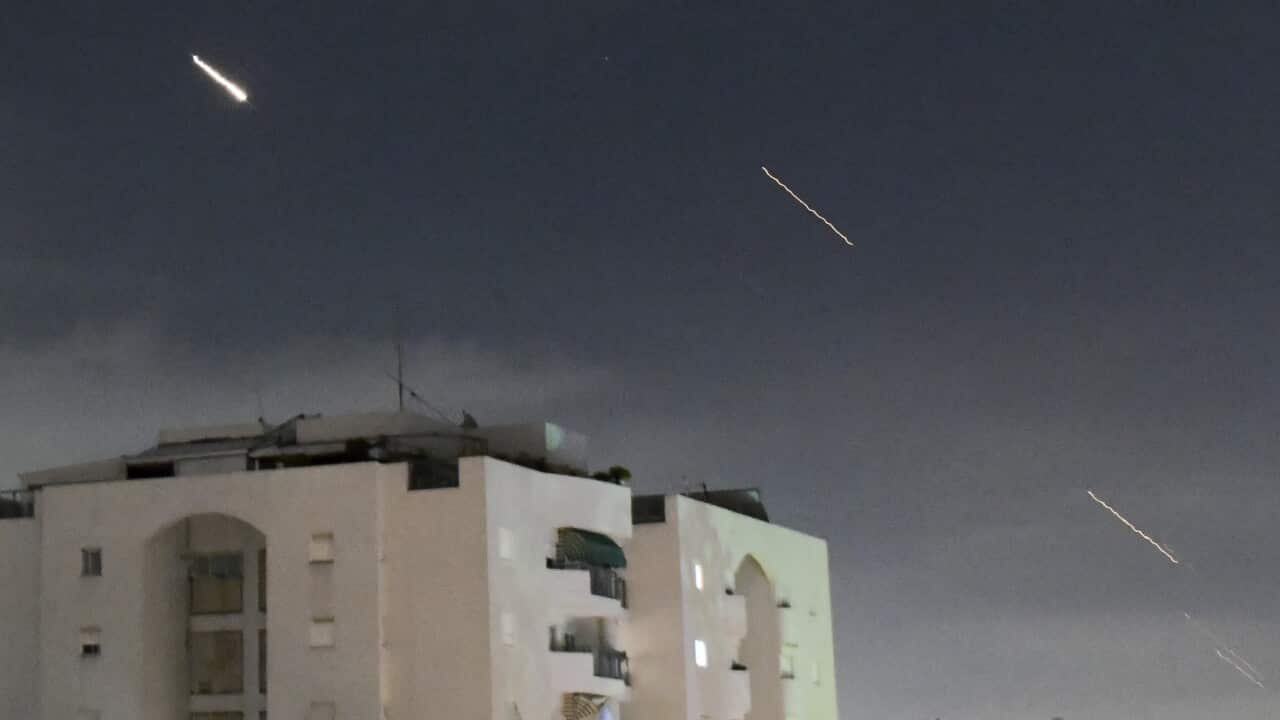Iran’s unprecedented attack on Israel over the weekend signifies a major shift from decades of shadow warfare.
in response to the killing of two top officials, raising global concerns of a full-scale war between the two nations.
Israel has vowed that Iran will “pay the price” for the attack, despite its allies urging against action that might increase hostility in the region.
Since the 1979 Islamic Revolution, Iran has typically used a subset of the Iranian Revolutionary Guard Corps (IRGC) to recruit, arm, and train proxy groups in the region.
As well as backing Hamas in Palestine, Iran is linked to, the , and militias in Syria and Iraq.
Iran vehemently supports a Palestinian state and has used these proxies to attack Israel, whose existence it has strongly opposed since the 1979 revolution.
Dr Andrew Thomas, lecturer in Middle East Studies at Deakin University, said this allows the state plausible deniability and acts as a “deterrent force”.
Thomas notes these groups are independent and make their own decisions, but are strongly influenced by Iran.
Referring to the killing of Iranian military officials in an attack on the Iranian consulate in the Syrian capital Damascus on 1 April, he said: “Iran doesn’t necessarily want this war to escalate, but they have to respond.”
“It gives Iran the opportunity to save face and say we’ve protected the deterrent aspect of our military … but also that’s where this conflict ends,” Thomas said.
Since the attack, analysts have debated whether Iran intended to cause genuine devastation in Israel or to save face at home after vows of revenge in recent months.
Here’s a breakdown of aggravations that lead to an escalation between Israel and Iran:
7 October – Hamas militants struck Israel, killing 1,200 people and taking over 200 hostages. The attack was a significant escalation in the long-standing conflict between Israel and Hamas. Israel has responded by bombarding Gaza, where more than 33,482 people have been killed in Gaza since 7 October, mostly women and children, according to the health ministry.
8 October – Hezbollah-led forces attacked Israeli communities and military posts along Israel’s northern border with Lebanon. The two sides have exchanged daily rockets, drones and anti-tank missiles over the last six months.
19 November – Yemen’s Houthi rebels hijacked an Israeli-linked ship in the Red Sea and took 25 crew members hostages.
The group has launched more than 40 attacks on commercial ships in the Red Sea and Gulf of Aden since November, forcing major shipping companies to use longer routes around southern Africa instead. In January, Israel’s allies struck Yemen in response.
25 December – Iran accused Israel of killing a senior adviser for the Islamic Revolutionary Guard Corps, brigadier-general Razi Mousavi outside Damascus. He was reportedly responsible for coordinating the military alliance between Syria and Iran.
28 December – Two Australian citizens, Ibrahim Bazzi and Ali Bazzi were killed by an Israeli airstrike in Lebanon, while focusing on Hezbollah targets.
2 January – An Israeli strike killed deputy Hamas chief Saleh al-Arouri in Beirut, Lebanon. It marks the first targeted assassination of a Hamas official outside occupied Palestinian Territories since 7 October.
8 January – Israel launches strikes in southern Lebanon, killing top Hezbollah commander Wissam al-Tawil.
29 March – Israel carries out deadliest strikes, killing more than 40 people in northern Syria’s Aleppo province as it steps up its war against Iran’s proxies.
The Israel Defence Forces claim to have killed Ali Abed Akhsan Naim, deputy commander of Hezbollah along with several fighters and Syrian soldiers.
1 April – Suspected , killing seven military advisers and three senior commanders.
It includes the death of brigadier-general Mohammad Reza Zahedi, who oversaw the overseas branch of the IRGC. Israel neither confirmed nor denied responsibility.
13 April – Iran launches more than 300 drones and missiles in an unprecedented attack on Israeli territory.
They were mostly intercepted by Israel’s Iron Dome defence system, with the US reporting it destroyed drones coming from the direction of Yemen. A 7-year-old girl was hurt by shrapnel, with no other serious injuries reported.
14 April – Israeli war cabinet minister Benny Gantz had vowed that Iran would pay “a price” when “timing is right” after Saturday’s strikes.
The United States has warned Prime Minister Benjamin Netanyahu that it will not take part in a counter-offensive against Iran, as Arab and Western nations alike call for restraint.
United Nations Secretary-General Antonio Guterres said it’s “now the time to defuse and de-escalate”, warning the Middle East is on the “brink” of a full-scale conflict.
– with additional reporting from Reuters
